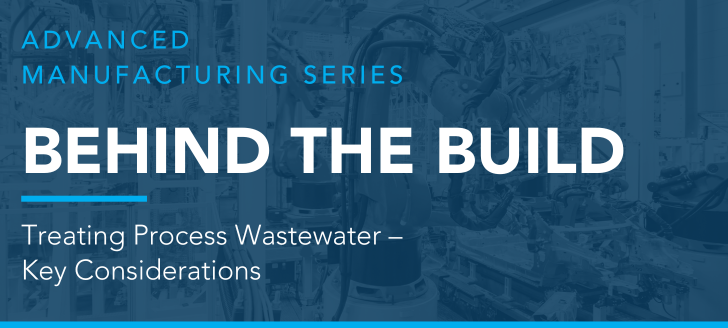Wastewater Treatment Systems
Process effluent is among the most complex and highly regulated biproducts of any manufacturing facility, and rightfully so, as it has direct correlation to the quality of water entering Public Owned Treatment Works (POTW). Asking the right questions of manufacturers and municipalities upfront allows you to create a playbook for treating process wastewater in a way that considers POTW capacity, environmental compliance, water conservation, overall space planning and the wide variety of cost and lead times associated with different system requirements.
What to know about your outbound wastewater
- Total Flow Rate: Know the volume of water that will be used and discharged by the proposed facility
- Dissolved Constituents: Understand the organic and inorganic matter that pollute your water during the manufacturing process
Compliance Criteria for Local Authority, POTW, & Federal Regulations
- Total Capacity: How much effluent can the local POTW handle daily?
- Required pH Balance: At what level of the EPA’s accepted range does the POTW require you to biologically treat your effluent to?
- Total Allowable Dissolved Solids: How much and what kind of dissolved constituents does the POTW allow based on their internal treatment train?
- Federal Limits: What federal regulations, if any, is the project subject to based on the manufacturing use? Are there any concentrated sources that could limit, even if the AHJ and POTW has no other limitations?
Strategies for Cost & Schedule Optimization:
- Strike a Balance: Understanding critical data about the performance of your facility and that of the POTW ensures all treatment requirements will be met without doubling of efforts. In some cases, that may mean paying a larger impact or monthly discharge fee to the POTW to avoid a capital and time intensive system upfront.
- Capitalize on Sustainability Initiatives: For process wastewater that needs minor pH and filtration adjustments, investment in re-use systems eliminates costly impact fees and long-term water and process effluent discharge fees.
- Maximize Real-Estate Footprint: Various means of holding wastewater should be evaluated to maximize cost efficiency based on available footprint
- Implement Rigorous Procurement Process: Understand the costs, lead times and ancillary building + utility requirements associated with every component of the system
At ARCO/Murray, we design and build wastewater treatment systems for manufacturers that deliver what you and the POTW need without the excess. We focus on real environmental requirements, smart system sizing and strategic scope and cost control to ensure your project operates reliably and is completed efficiently, within budget.
Where do you see the biggest challenges in your system? Let’s discuss!

Rick Guth
Vice President

